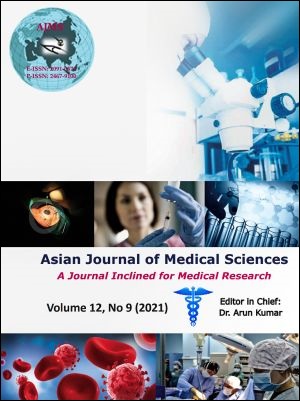A study on Hyperprolactinaemia and associated factors among women attending Gynecology outpatient department at a tertiary teaching hospital in West Bengal
Keywords:
Hyperprolactinaemia, Idiopathic Hyperprolactinaemia, Drug induced Hyperprolactinaemia, InfertilityAbstract
Background: Prolactin has multiple biological functions and hyperprolactinaemia is a common condition in clinical practice in both females and males. It has many etiologies and may present with variable symptoms to health care workers.
Aims and Objectives: To study the various etiologies and clinical presentation of patients presenting with hyperprolactinaemia in a tertiary care medical college and hospital in West Bengal to aid in quick decision management.
Materials and Methods: The current study was a cross-sectional study with follow up conducted over a period of one year in the Department of Gynecology and Obstetrics, Jagannath Gupta Institute of Medical College and Hospital. Following sample size calculation, a total of 1824 women were enrolled for the study of which 53 were found to have raised prolactin level (after following proper inclusion and exclusion criteria) They were subsequently further examined and followed up.
Results: Majority of the subjects studied belonged to 20-29 age group (49.05%) followed by 30-39 years age group (35.85%). The most common cause of hyperprolactinaemia in our study were idiopathic (24.53%) followed by drugs (22.64%) and pituitary adenoma. Most of the patients with hyperprolactinaemia, presented with complain of infertility (56.6%), menstrual abnormality (50.94%) and galactorrhoea (18.87%) in our study. Therapeutic drugs used for various reasons were one of the main cause of hyperprolactinaemia (22.64%) and mainly due to use of proton pump inhibitor with prokinetics use.
Conclusion: Hyperprolactinaemia is very much common in patients with infertility, menstrual abnormality or galactorrhoea and mostly are due to idiopathic or drug induced causes. With early initiation of treatment most of the causes and effects can be cured.
Downloads
Downloads
Published
How to Cite
Issue
Section
License
Copyright (c) 2021 Asian Journal of Medical Sciences

This work is licensed under a Creative Commons Attribution-NonCommercial 4.0 International License.
Authors who publish with this journal agree to the following terms:
- The journal holds copyright and publishes the work under a Creative Commons CC-BY-NC license that permits use, distribution and reprduction in any medium, provided the original work is properly cited and is not used for commercial purposes. The journal should be recognised as the original publisher of this work.
- Authors are able to enter into separate, additional contractual arrangements for the non-exclusive distribution of the journal's published version of the work (e.g., post it to an institutional repository or publish it in a book), with an acknowledgement of its initial publication in this journal.
- Authors are permitted and encouraged to post their work online (e.g., in institutional repositories or on their website) prior to and during the submission process, as it can lead to productive exchanges, as well as earlier and greater citation of published work (See The Effect of Open Access).




